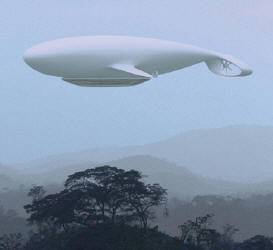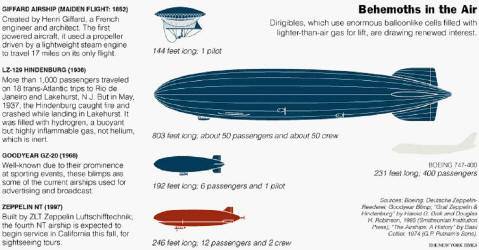2010 Physics Olympics
Green Physics
Overview
Western Kentucky Physics Olympics is a half-day competition consisting of a pentathlon of challenging problem-solving activities that reward teamwork, creativity, and communication. The WKU Department of Physics & Astronomy invites each high school to send one or more teams of four to compete in the 2010 Western Kentucky Physics Olympics. This year’s event will be held Saturday, February 20 from 8:30 a.m. until about 2:00 p.m. in the Thompson Center, Central Wing on WKU’s Bowling Green campus.
The competition will commence with two activities that involve competitors arriving at the event ready to compete with devices they have designed, constructed, and tested. The competition entitled Edible Musical Instrument requires each team to design and construct a musical instrument that will be eaten after being used to perform the song Itsy Bitsy Spider. For Wind Generator each team will design and construct a wind turbine capable of generating the greatest current through the spinning of a portable compact disk player’s motor. This year’s “Calculation/ Communication Challenge” is entitled Slow-Haul Dirigible, and the "Impromptu Team Activity” will have participants creating the conditions for a fusion reaction.
Event 1: Edible Musical Instruments – the Do-Ahead Project
Each team is required to design and construct from completely edible components, one musical instrument capable of playing the children’s song, The Itsy Bitsy Spider. There are five notes that must be played: G, A, B, C, & D (the three occurrences of low D can be omitted). The scoring will divided into four components: the ability for the performer to make the instrument accurately hit the necessary notes, quality of the team’s individual performance, participation in the all-competition band performance, and edibility of the instrument.
One team member, selected by the team, will describe the design and function of the instrument and will play the five required notes: G, A, B, C, & D. A microphone and computer will be used to digitally capture the sound tests, and the computed power spectrum of the tones will allow the judges to compare the results to the standard musical frequencies.
The first assessment for this event will be the sound test. The scoring will be based on nine criteria: the ability to accurately create the primary frequency for each of the five notes and the spacing of the four intervals (difference in frequency between each successive note). For the most accurate measure of the pitch your team's musician needs to sustain each of the five required notes for at least one second. The standard frequencies ( http://www.phy.mtu.edu/~suits/notefreqs.html ) for the five notes are:
G = 196.00 Hz,
A = 220.00 Hz,
B = 246.94 Hz,
C = 261.63 Hz, and
D = 293.66 Hz.
The interval between any two successive whole notes is f1 = f2 ∙ (2)2/12.
Each team will then perform the song The Itsy Bitsy Spider, with one team member playing the instrument and the other three accompanying with the traditional hand gestures. The scoring will be based of the overall quality of the performance. Teams must download the linked PDF file containing the sheet music for the officially approved version of the song. Without the time signature, the notes to be played are:
- G G G A B B B A G A B G B B C D D C B C D B
G G A B B A G A B G - - G G G A B B B A G A B G
Points will be earned when the designated musician joins the all-competition band and performs the song while being digitally recorded for eventual public distribution via the Internet (e.g., WKU Physics & Astronomy website and YouTube).
Finally, the entire instrument must be eaten in front of the judges at the indicated time following all testing and performances. Any and all team members may participate in the consumption of the instrument. However, if, prior to the lunch break, any team member regurgitates or in any way fails to “keep down” the ingested part of the instrument, that team will lose any points earned for the group performance. Failure to completely ingest the entire instrument will result in disqualification for this event.
The final ranking will be based on the sum of the four component scores. Ties will be broken in favor of the quality of the team’s individual performance.
Event 2: Wind Generator – the Do-Ahead Project
CONSTRUCTION:
Teams will build a blade assembly that consists of any kind of propeller / pinwheel / rotor attached to a compact disc (CD), which will be used to capture wind power and generate voltage. Each team must bring one pre-constructed blade assembly attached to a standard CD. The CD must fit on the mount found in a standard CD player. Modification of the CD (except for the center hole) is allowed. When mounted, the blade assembly cannot have any portion extending behind the mounting plane of the CD. The maximum diameter of the blade assembly is 25.0 cm. The blade assembly may be made of any nonmetallic substance. Commercial blades (modified or unmodified) are not permitted.
THE COMPETITION:
- The organizers will provide all testing materials, which will be the same for all teams. The wind source at each station will be a 20” multispeed box fan, mounted in a fixed position with the bottom of the grill at least 15 cm above the table. Other testing materials include: a ring stand which allows for vertical and horizontal adjustments of the blade assembly, clamps to allow teams to orient the mount to any angle with reference to the fan, a portable CD player motor used as the generator, and a multi-meter to record voltage.
- There will be two stations - one high speed and one low speed - to test the blade assemblies. Teams must set up and complete the testing within a 3-minute period at each fan.
- The blade assembly can be oriented and placed in any position or angle in front of the fan. The teams must mount their blade assembly to the generator and position / orient it in front of the fan prior to the fan starting. Once mounted, blades may not be modified except between runs.
- The designated team’s test leader informs the event supervisor when the team is ready. The supervisor starts the time when the fan is started and begins recording the highest voltage, in millivolts (mV), during a one-minute time period.
- Teams may give their blade assembly a single tap to start spinning once the fan is turned on.
SCORING:
Each team’s final score will be the sum of low speed voltage (mV) + high speed voltage (mV). If the device fails during a run the score at that speed will be zero. Ties will be broken in favor of the greatest high speed voltage.
RECOMMENDED RESOURCES:
American Wind Energy Association: www.awea.org, www.alliantenergykids.com, www.kidwind.org
Event 3: Slow-Haul Dirigibles – the Calculation-Communication Challenge
The goal of this contest is to cause a balloon to rise 2 meters within 3 minutes, but to take as much of the three minutes to do so. Each team will be divided into two groups: two members responsible for measurement and design of the load for the helium-filled balloon, and the other pair responsible for executing the balloon’s slow rise.
 |
 |
Event 4: Fusion – the Impromptu Team Physics Activity
Controlled Thermonuclear Fusion – bringing the power source of the stars down to Earth
The process of nuclear fusion is responsible for powering stars, including our Sun; releasing energy as four hydrogen nuclei combine under extreme temperature, density, and pressure to form helium. In this competition, teams will race to be the first to drive four protons to simultaneously end up within the central interaction zone, where the nuclear strong force will overcome electric repulsion and allow the fusion of hydrogen.
Event 5: Fermi Questions: The Order of Magnitude Quiz
Arrive at a reasonable approximation for the value of a complex situation with very little to no information available to directly compute the answer. In this quiz, the contestants will need to quickly make assumptions for values to use in simple calculations in order to arrive at the "correct" answer, stated as the power of ten of the number that fits the accepted value.
Teams will receive 7 questions to complete within 15 minutes. The teams can divide the work in any way they see fit, but only one answer per question per team will be accepted. Answers will be judged according to how many orders of magnitude the team's answer is from the judge's solution. The lowest score wins -- 0 points awarded for the answer accepted by the panel of judges, with 1 point scored per order of magnitude from the accepted value.
A community of faculty, staff, and students engaged in better understanding the physical world.
Some of the links on this page may require additional software to view.


